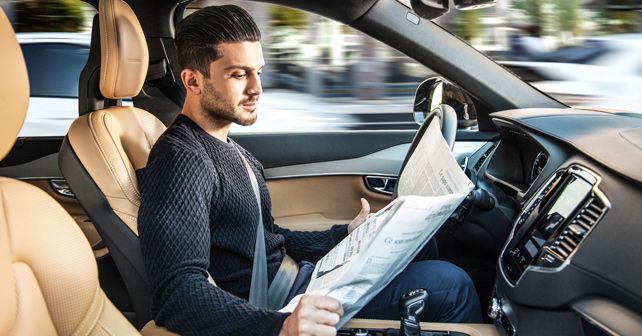
Imperfect people can’t build perfect machines, believes Karl. So, who’s responsible if ‘and when’ a driveless car is involved in a crash
A few years ago now, I was involved in one of the first media drives of the GTA Spano at the Circuit Ricardo Tormo in Valencia. This was a long time before Need For Speed hit cinemas, and while the car was still being tested with a Dodge Viper engine. After the car was rolled off the truck, our photographer started doing his thing.
Before we were allowed to get behind the wheel, though, the folks from GTA Motor shifted the car around to position it for the shots. It was during one of these repositioning manoeuvres that the snapper noticed something a bit strange.
Peering through the window at the instrument panel, there were no dials, which was something new back then – a long time before Audi’s Virtual Cockpit and Jaguar’s Virtual Instruments. While that was interesting, it was the fact that the screen was completely blue. No dials, no logos, just blue with a few white characters. He remarked that it looked curiously like the “blue screen of death.”
Sure enough, when it was our turn to take the wheel, the start-up procedure revealed that the instruments, infotainment and other parts of the car were run by a Windows computer. We joked that it would be a disaster for the programme to crash while driving. In fact, it could even lead to an accident. Thankfully, we had our drive, reported the Spano was very average and headed back home. But a report recently called the Spano’s Windows crash back to mind.
Here’s the thing – imperfect people can’t build perfect machines. No matter how many checks and balances there are in place, something will go wrong. There are too many variables in both manufacturing and driving conditions for it to work perfectly every time. Sensors fail, moving parts weaken, camera lenses get scratched. Autonomous cars will have accidents due to something failing in the system, so who takes responsibility for that?
General Motor’s head of innovation, Warwick Stirling, recently told an online publication that once a driver left the driving up to an autonomous car, they had relinquished their responsibility. “If the driver is not driving, the driver is not liable. The car is driving,” said Stirling.
General Motors went into damage control, getting a spokesperson to chat to the journalist in question and clarify that “the liability space is very complex” and stated that the company hasn’t made any official comments nor position on liability.
Audi, on the other hand, happily put on the record that it would take full responsibility, but with some caveats. Dr Thorsten Leonhardt, the man in charge of Audi’s pre-development of automated driving, said the self-driving function has to be operated and used as intended, but if the car is in control at the time of a crash the driver goes to his insurance company and the insurance company will compensate the victims of the accident and in the aftermath they come to us and we have to pay them,” said Leonhardt.
Will it be that simple, though? Will car companies simply roll over and pay compensation? I’m willing to bet that they will do their best to minimise compensation claims. And there will be claims, as sure as the sun rises in the east.
There’s no question, autonomous cars are coming, and sooner than we think. But before we hand over full trust and rely on a car company to take care of us, and our beloved, it may be worth reading the fine print very carefully.























Write your Comment